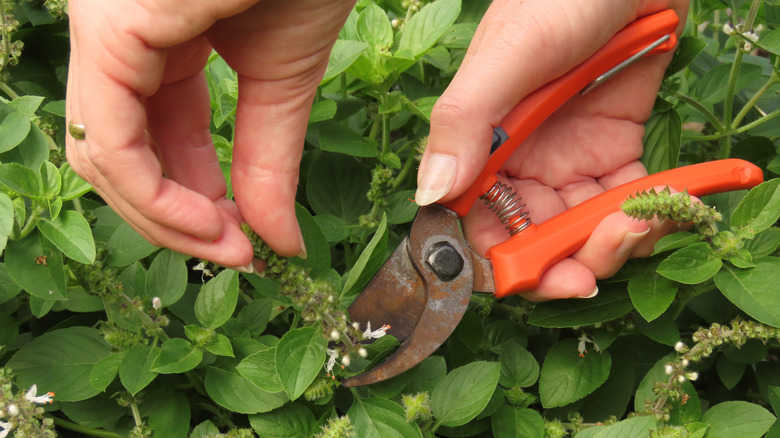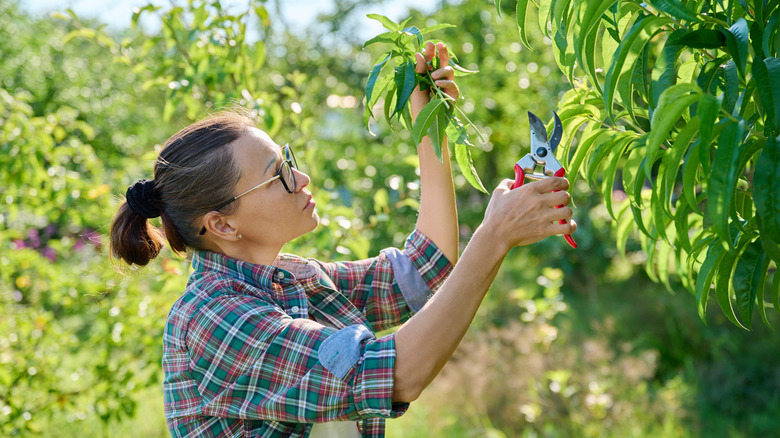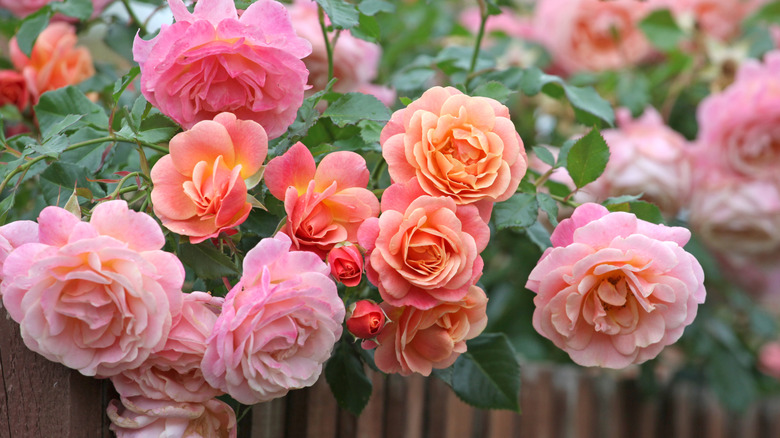The Effective Pruning Technique That Prevents Your Plant From Becoming Long & Leggy
If you look out your window, you might notice a bush has sprouted long shoots seemingly overnight. Many plants are prone to becoming "leggy," or growing tall stems that only sport leaves at the very top. This is most noticeable in bushes, as it makes the bush lose its fullness and become scraggly, like a dog that hasn't been groomed in a long time. Even indoor plants can get too long, which is why it's necessary to prune them. There are many different pruning practices tailored to achieve certain results, with stagger pruning designed to prevent a plant from becoming long and leggy as it grows.
Pruning involves removing parts of a plant to stimulate and control its growth. While your plants probably won't die from a lack of pruning, regular maintenance helps plants ranging from large trees and shrubs to small indoor plants remain healthy, and it improves their visual appearance. Stagger pruning helps plants grow fuller at an even rate, keeping them from becoming leggy.
How to stagger prune
To stagger prune, you snip the stems of your plants at different heights. Using a clean pruning instrument, trim the plant at three different levels: low, mid, and high. These levels ensure the plant grows evenly. Lower-level cuts should be closer but not at the main stem, and each proceeding level should be as evenly spaced as you can make them. These cuts should not be made in a tier, instead snipping at random to ensure the plant looks even.
Stagger pruning is one way to make your garden's summer color last well into fall, as it helps mimic how the plant grows naturally and allows more light to reach deeper into the plant. In the case of flowering plants, deadheading — or snipping off old flowers — during this process can help your plant produce more flowers over a longer period. Even plants that you thought were finished flowering might produce new flowers after pruning.
What types of plants benefit from stagger pruning
Bushy, flowering plants like hibiscus, shrub roses, and climbing roses benefit from stagger pruning, but so do herbaceous plants. Basil, chamomile, and cilantro are herbs that need pruning to survive, and stagger pruning can help them grow fuller rather than longer. Fast growing plants like hydrangeas can also benefit from regular staggered pruning so that they don't lose their body as they shoot up.
The time of year matters with pruning, but when you should do it is determined by your plant. Plants like roses should be pruned in the late fall through early winter, as this is when they enter their dormant period. Basil, however, can be pruned throughout its growing period. Pruning basil as it grows helps with the leaves' flavor, if you plant to use them in cooking. Herbs lose some of their taste following flowering, so be sure to snip off flowers as they appear.


